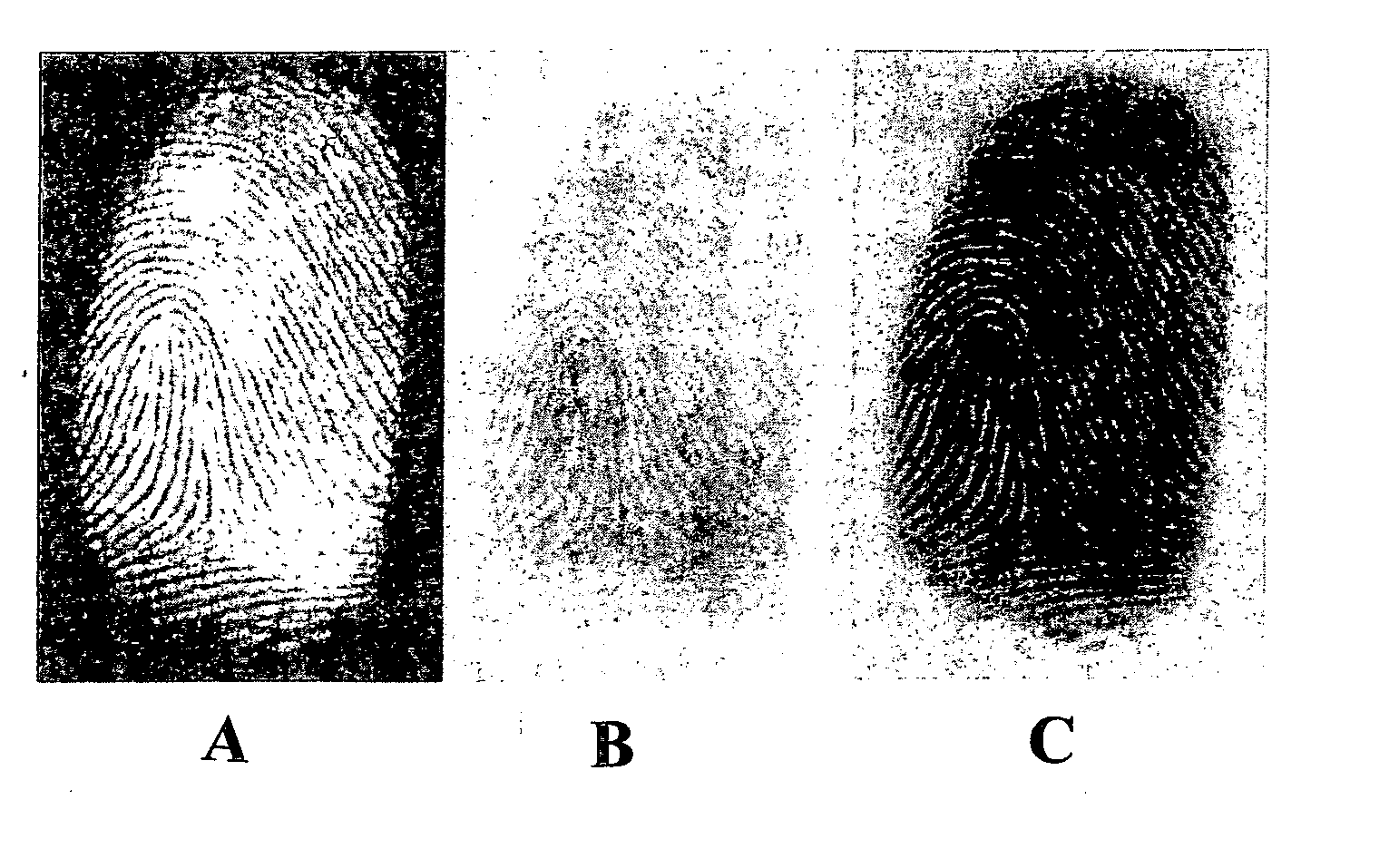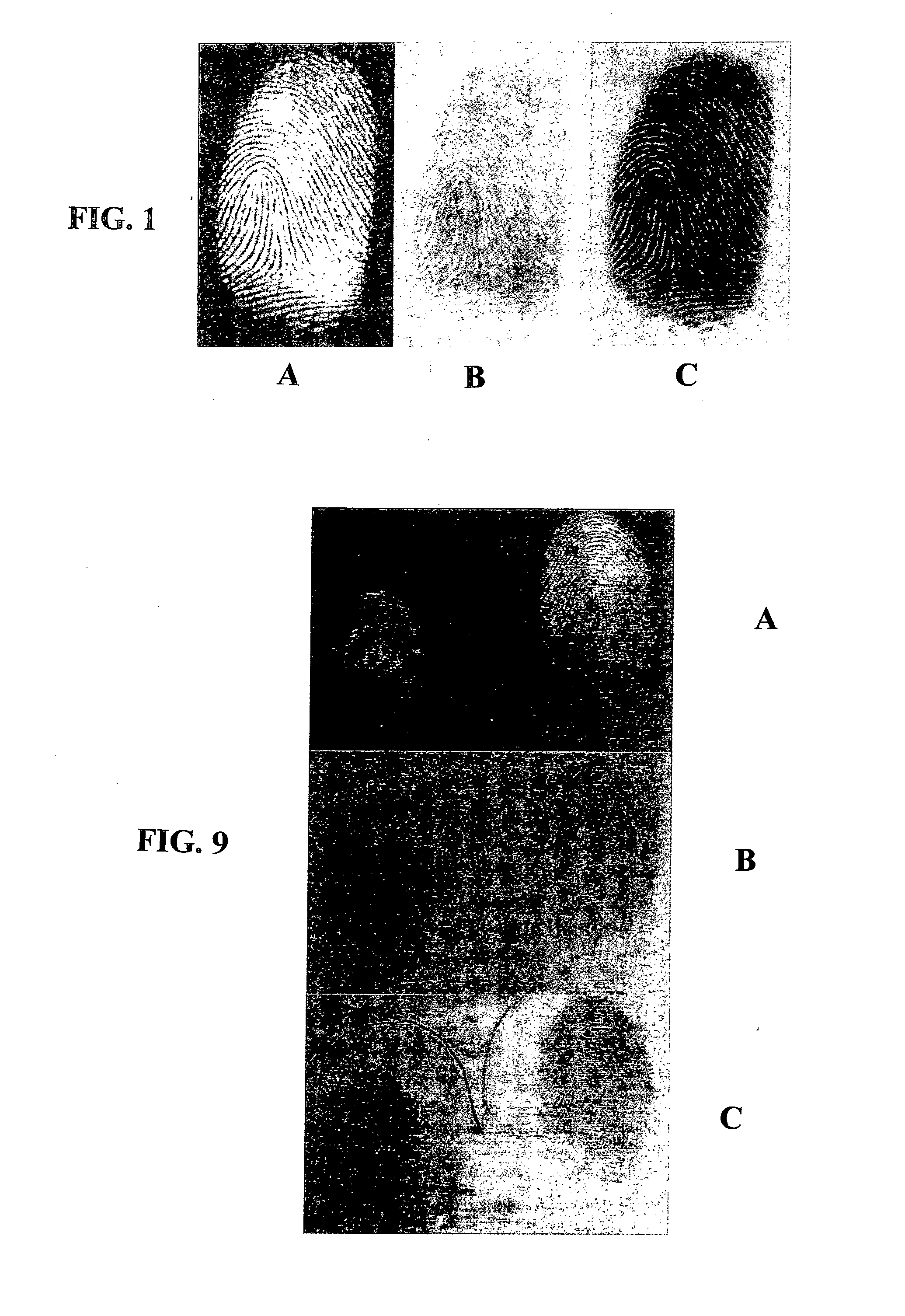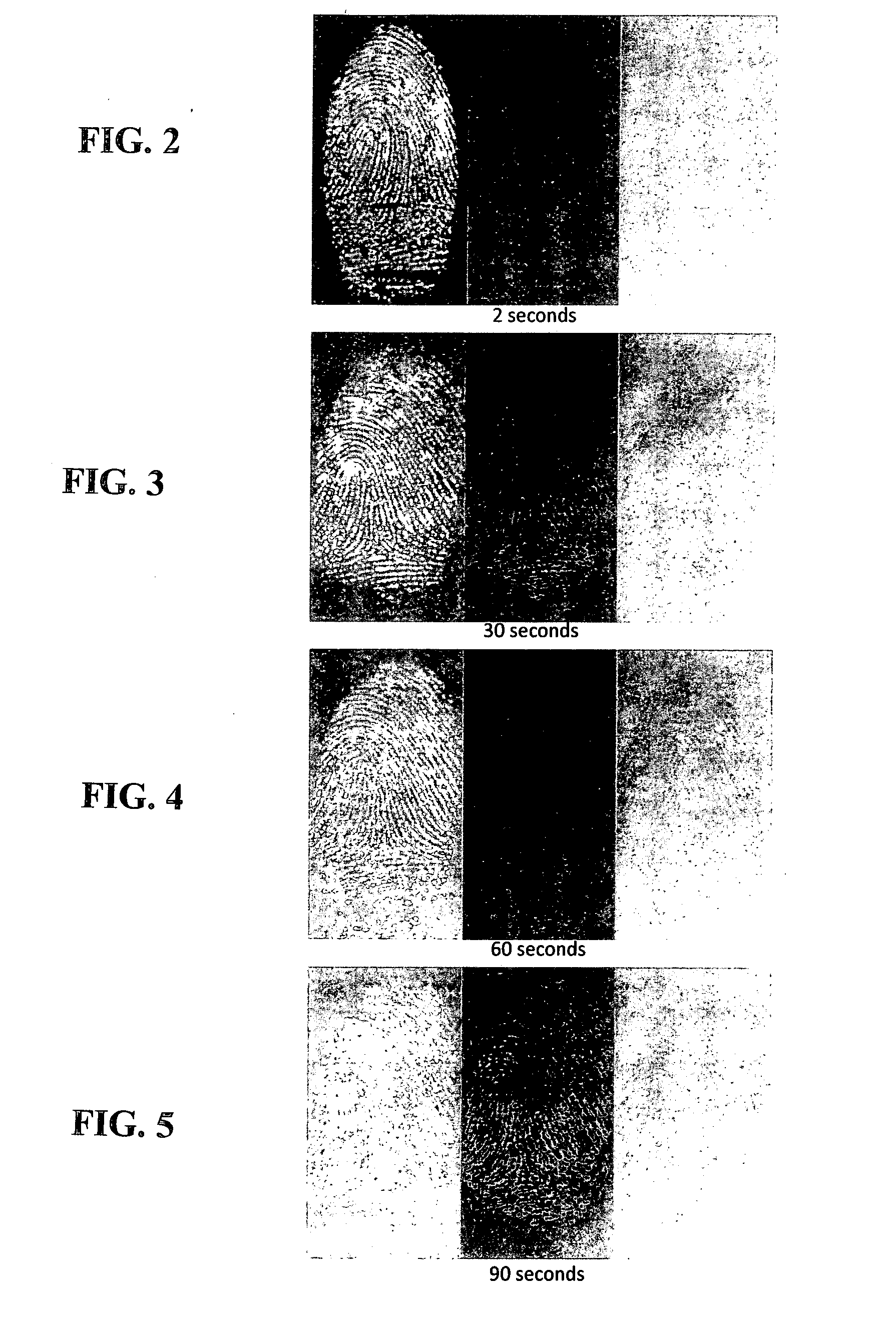Method of Developing Latent Fingerprints
a fingerprint and latent technology, applied in the field of latent fingerprint development, can solve the problems of poor results and significant limitations of published methods, and achieve the effects of simple, reliable, and quick training
- Summary
- Abstract
- Description
- Claims
- Application Information
AI Technical Summary
Benefits of technology
Problems solved by technology
Method used
Image
Examples
example 1
[0043]Hot air gun
[0044]A hot air gun (Leister Triac S Hot Air Blower) was calibrated using a thermocouple to measure the temperature of the air emitted at two distances from the device, namely 3 cm and 6 cm, for ten different heat settings spanning the full range. This corresponded to a temperature range of 45-360° C. at 6 cm and 60-535° C. at 3 cm. These were air temperatures and it is likely that paper at these distances only approached but probably did not reach these temperatures.
[0045]At a heating distance of 6 cm, an air temperature of 160° C. did not give rise to any fluorescent or visible development of fingerprints on white copy paper after heating for 8 min. Fingerprint development started to be observed at temperatures above about 220° C., and at 245° C., fluorescent prints were developed after 6 min of heating. By 310° C., fluorescent fingerprints were developed after 45 sec, turning visible (brown) after about 1 min. This process accelerated with further increases in te...
example 2
[0048]Muffle furnace
[0049]A wire embedded element furnace (made by B and L Tatlow) was used. The nominal temperature of the muffle furnace was set in the vicinity of 300° C.; monitoring of the actual temperature with a thermocouple showed that temperature variation was ±10° C. Since the door had to be opened to admit the sample, the “initial” temperature at which the paper sample was heated was generally 20-30° C. degree cooler than nominal. For an initial temperature of about 300° C., the times for fluorescent and then subsequent visible fingerprint development were 10 seconds and 20 seconds respectively. Some general observations were:
[0050]Visible prints could be developed on every type of paper tested, although the development of fluorescent prints prior to visible observation was not observed for some copy paper colors.
[0051]Using the furnace, fingerprints on crumpled paper could be developed.
[0052]One week-old and seven week-old prints could be developed in the furnace.
example 3
[0053]GC Oven
[0054]A Hewlett Packard 5890 Series II Gas Chromotography (GC) oven was used. Samples (white copy paper) developed in the GC oven were subjected to a linear temperature ramp taking them from 100 to 300° C. at rates which varied from 5 degree C / min to 70 degrees C / min. All of these experiments were conducted until visible prints could be observed on the paper. In general, no visible prints were observed before 220° C., and the best prints were obtained with the fastest heating rate of 70 degrees C / min, although all of the ramps developed fingerprints.
[0055]A fingerprint aged for two months was also successfully developed in the GC oven.
PUM
 Login to View More
Login to View More Abstract
Description
Claims
Application Information
 Login to View More
Login to View More - R&D
- Intellectual Property
- Life Sciences
- Materials
- Tech Scout
- Unparalleled Data Quality
- Higher Quality Content
- 60% Fewer Hallucinations
Browse by: Latest US Patents, China's latest patents, Technical Efficacy Thesaurus, Application Domain, Technology Topic, Popular Technical Reports.
© 2025 PatSnap. All rights reserved.Legal|Privacy policy|Modern Slavery Act Transparency Statement|Sitemap|About US| Contact US: help@patsnap.com



